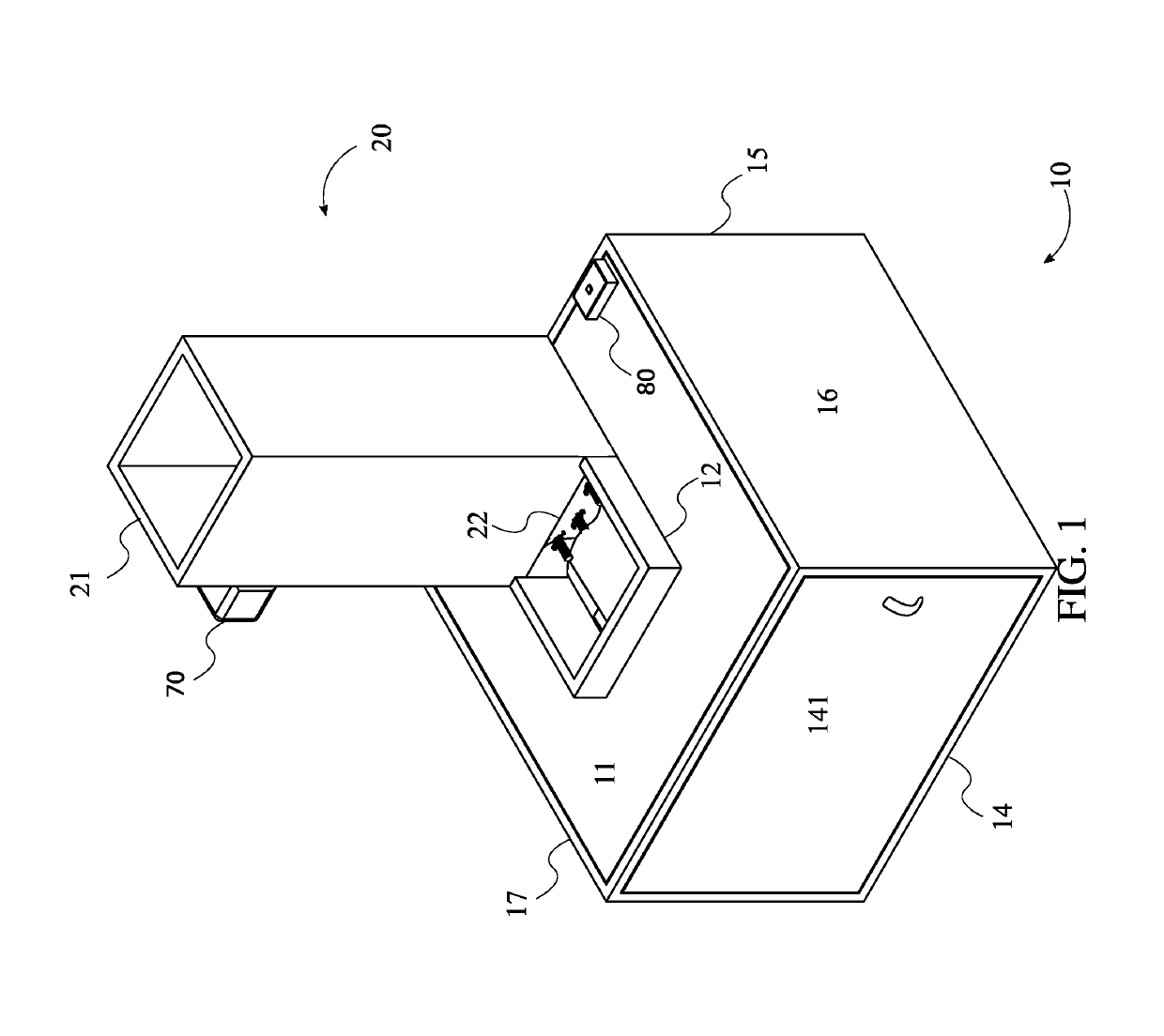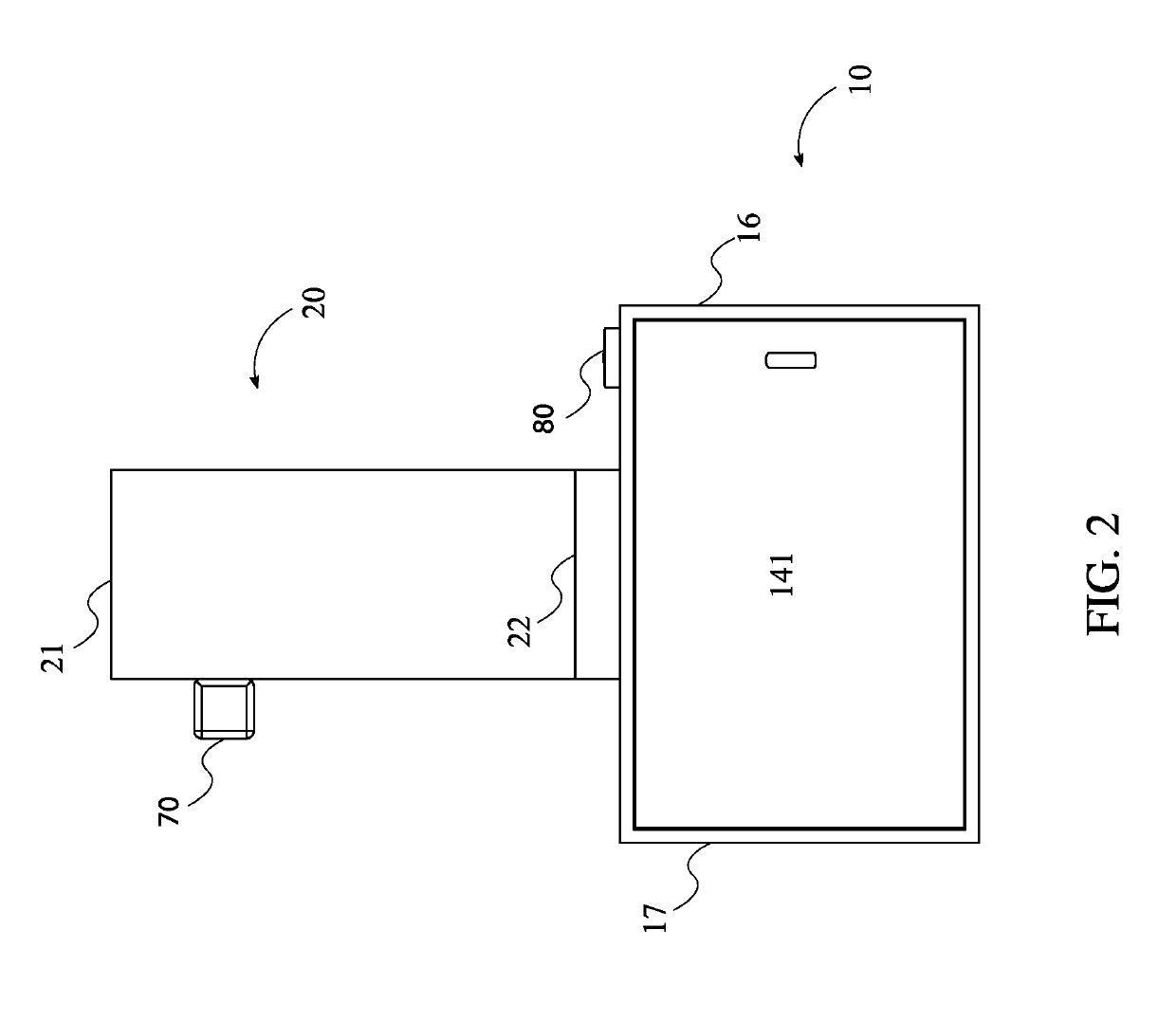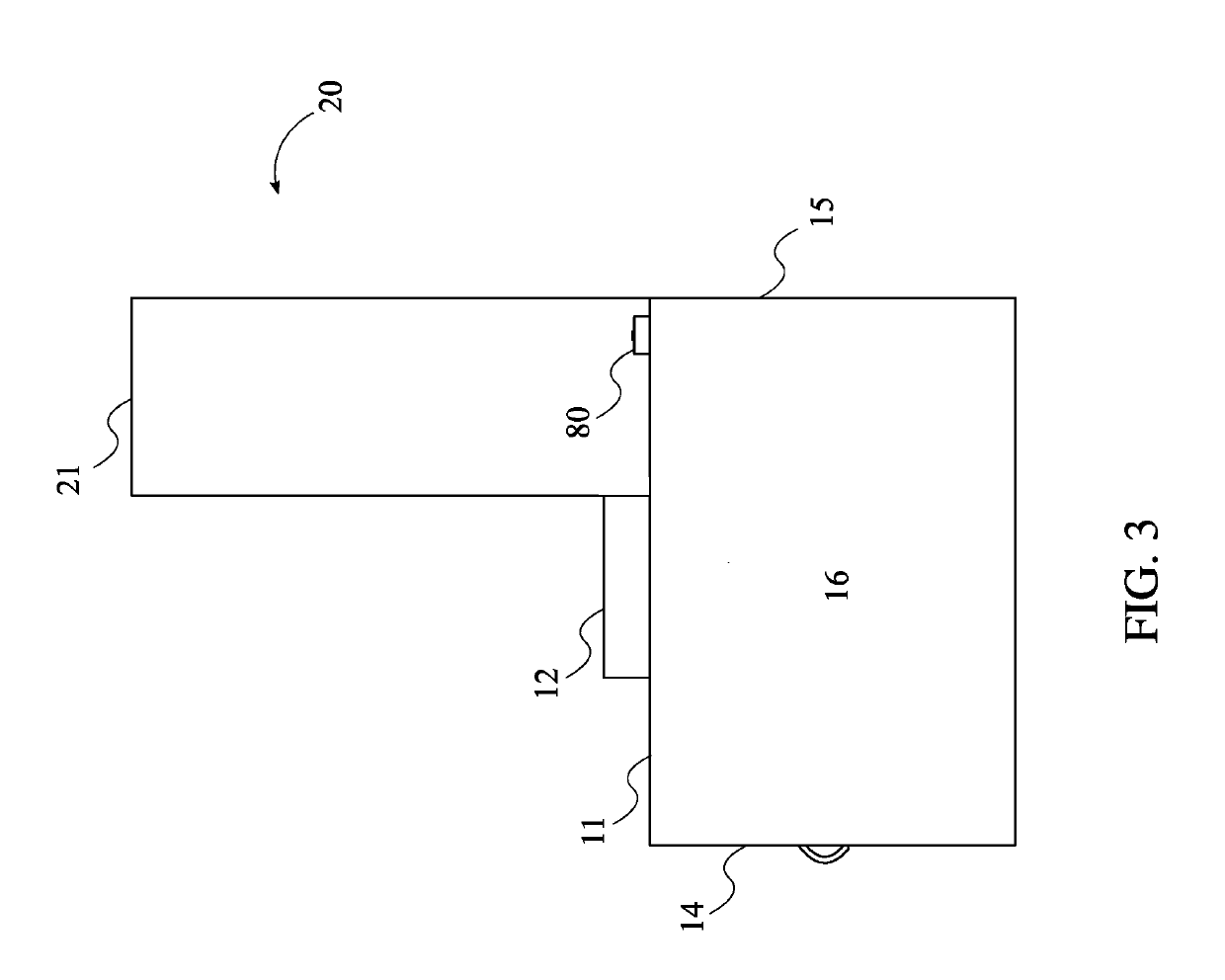Automatic Self-Cleaning Animal Litter Apparatus
- Summary
- Abstract
- Description
- Claims
- Application Information
AI Technical Summary
Benefits of technology
Problems solved by technology
Method used
Image
Examples
Embodiment Construction
[0031]All illustrations of the drawings are for the purpose of describing selected versions of the present invention and are not intended to limit the scope of the present invention.
[0032]As illustrated in FIG. 1 to FIG. 5, the present invention comprises an enclosure 10, a hopper 20, and a conveyer belt mechanism 40. The hopper 20 is terminally connected to the enclosure 10, which provides housing for the conveyer belt mechanism 40. Additionally, the enclosure 10 and the conveyer belt mechanism 40 offer the main function of defecation and urination to an animal user and the removal of used litter from the apparatus while the hopper 20 is used to supply fresh litter for the apparatus of the present invention.
[0033]As seen in FIG. 1 to FIG. 5, the enclosure 10 comprises a top plate 11, a litter box opening 12, a drawer 13, a front 14, a back 15, a first side 16, a second side 17, and a receptacle 18. The top plate 11 is terminally connected to and supported by the front 14 and back 1...
PUM
 Login to View More
Login to View More Abstract
Description
Claims
Application Information
 Login to View More
Login to View More - R&D
- Intellectual Property
- Life Sciences
- Materials
- Tech Scout
- Unparalleled Data Quality
- Higher Quality Content
- 60% Fewer Hallucinations
Browse by: Latest US Patents, China's latest patents, Technical Efficacy Thesaurus, Application Domain, Technology Topic, Popular Technical Reports.
© 2025 PatSnap. All rights reserved.Legal|Privacy policy|Modern Slavery Act Transparency Statement|Sitemap|About US| Contact US: help@patsnap.com



